Abstract
The experiments described here form part of a series carried out to determine the conditions of antigen presentation which dispose to the production of IgE antibody in the rat. We have found that Hooded Lister rats in comparison with rats of some other strains have an exceptional ability to produce reaginic antibodies: responses can be consistently induced with very small doses of antigen and are boosted to high levels with a second dose of antigen.
The effect of the dose of antigen on these responses is as follows.
Full text
PDF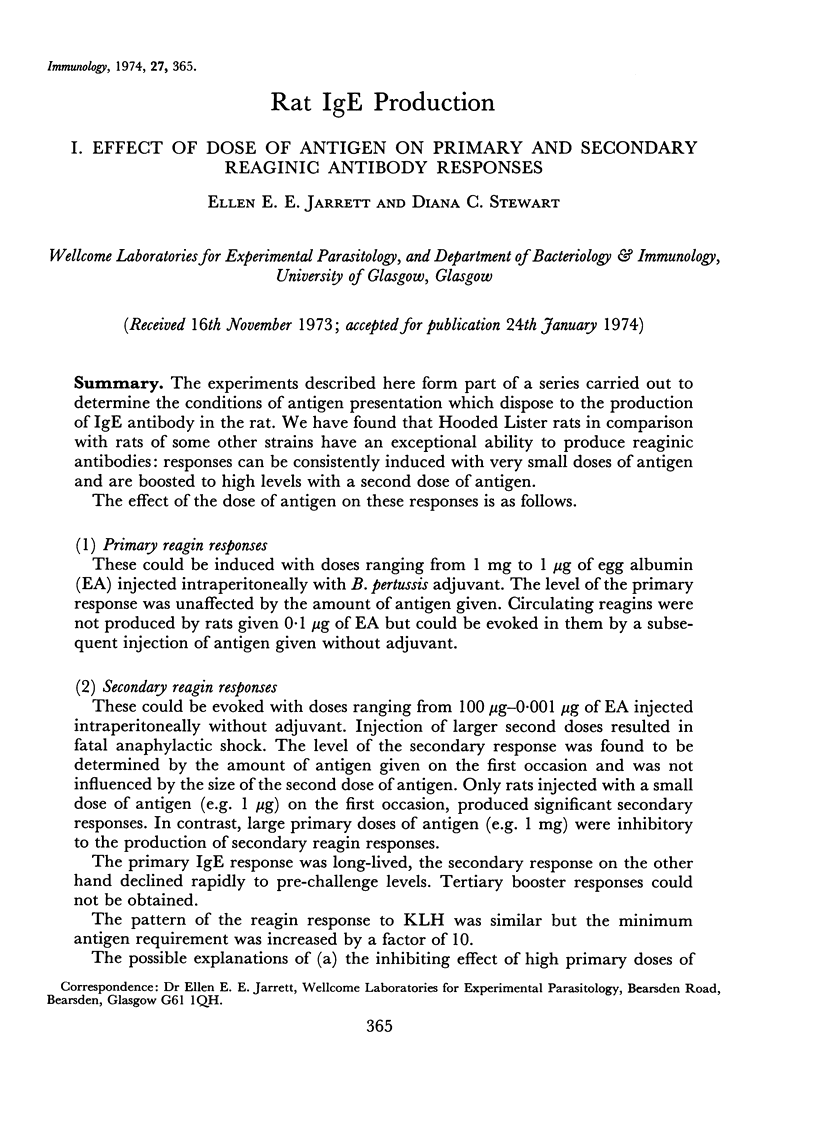

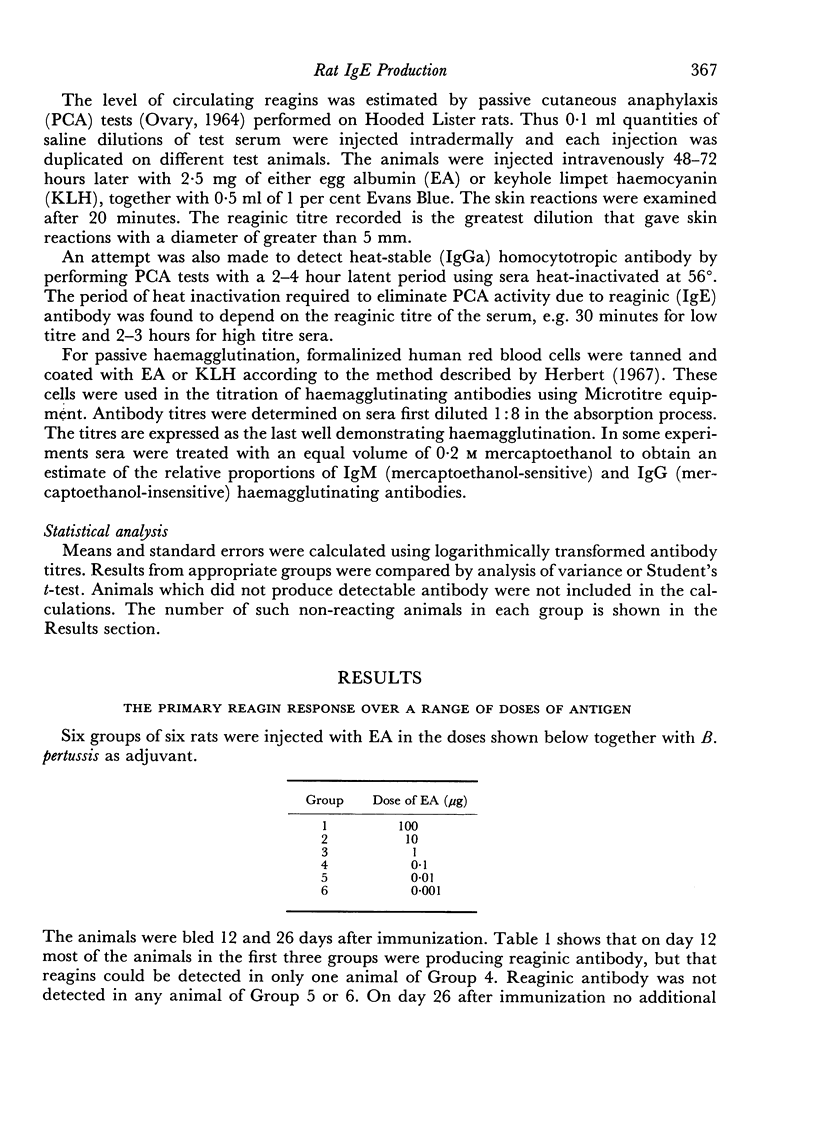

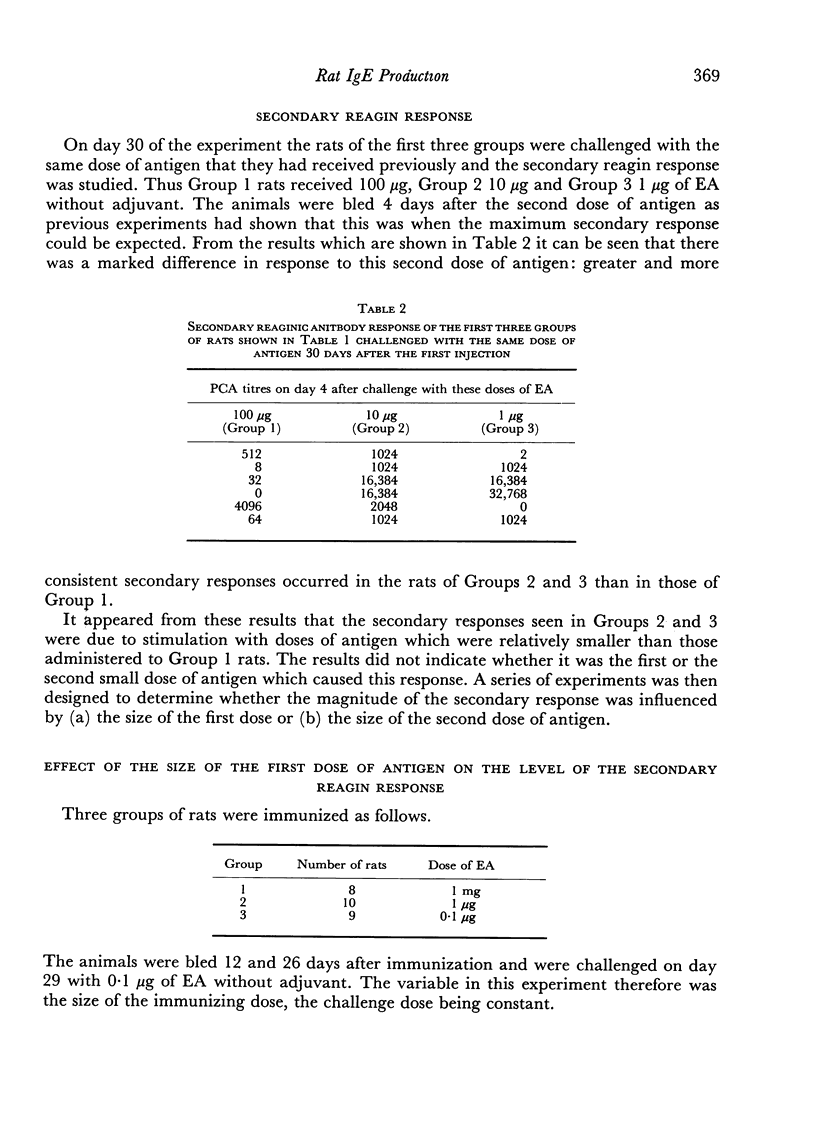
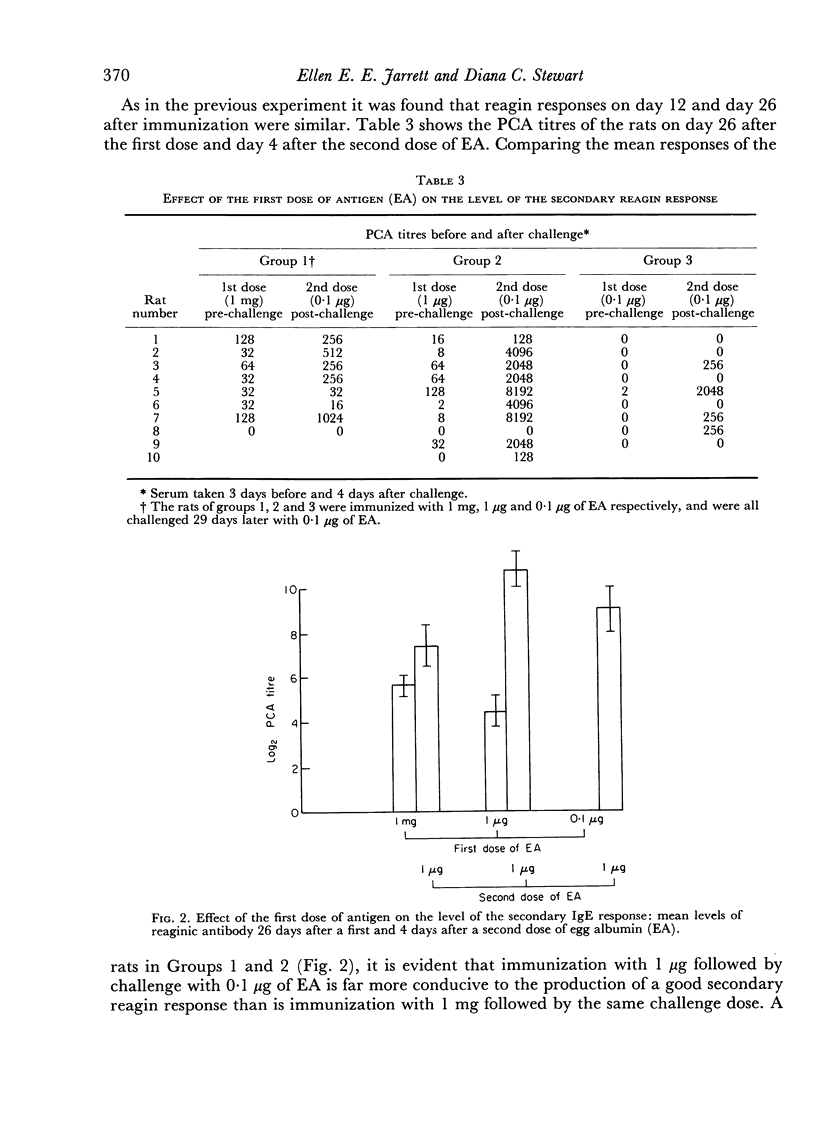

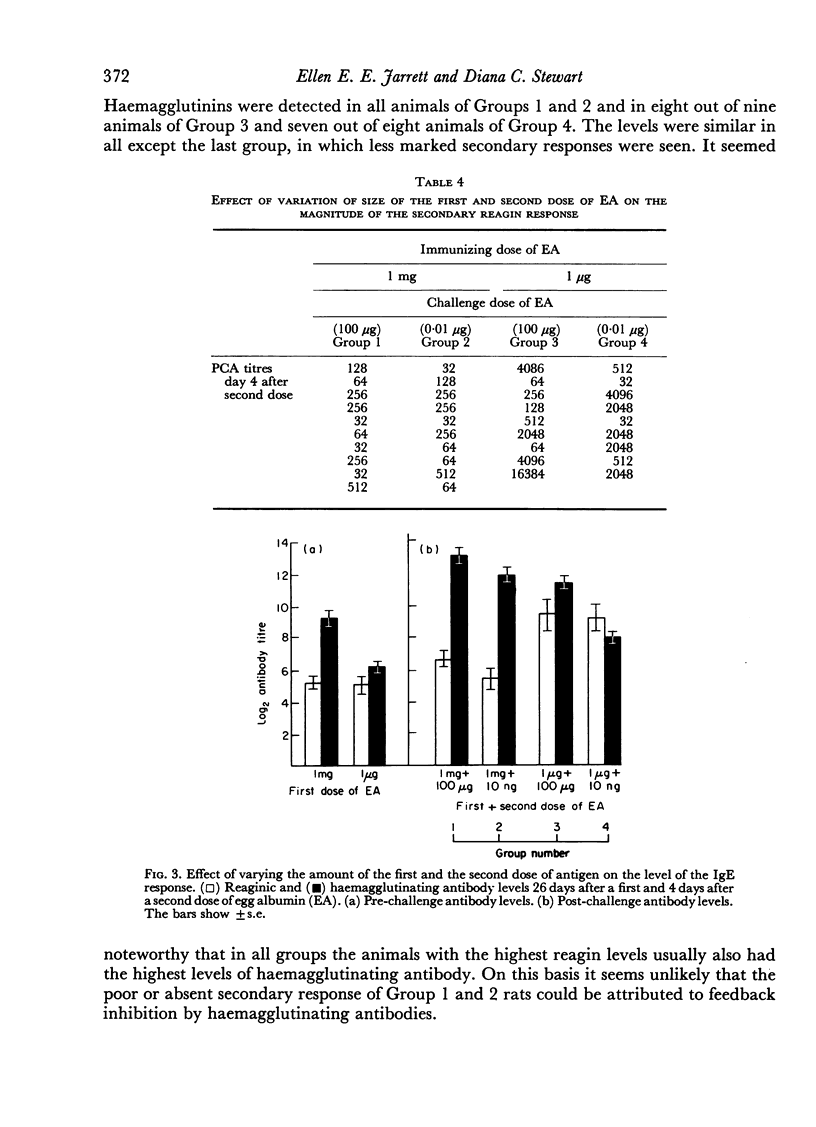
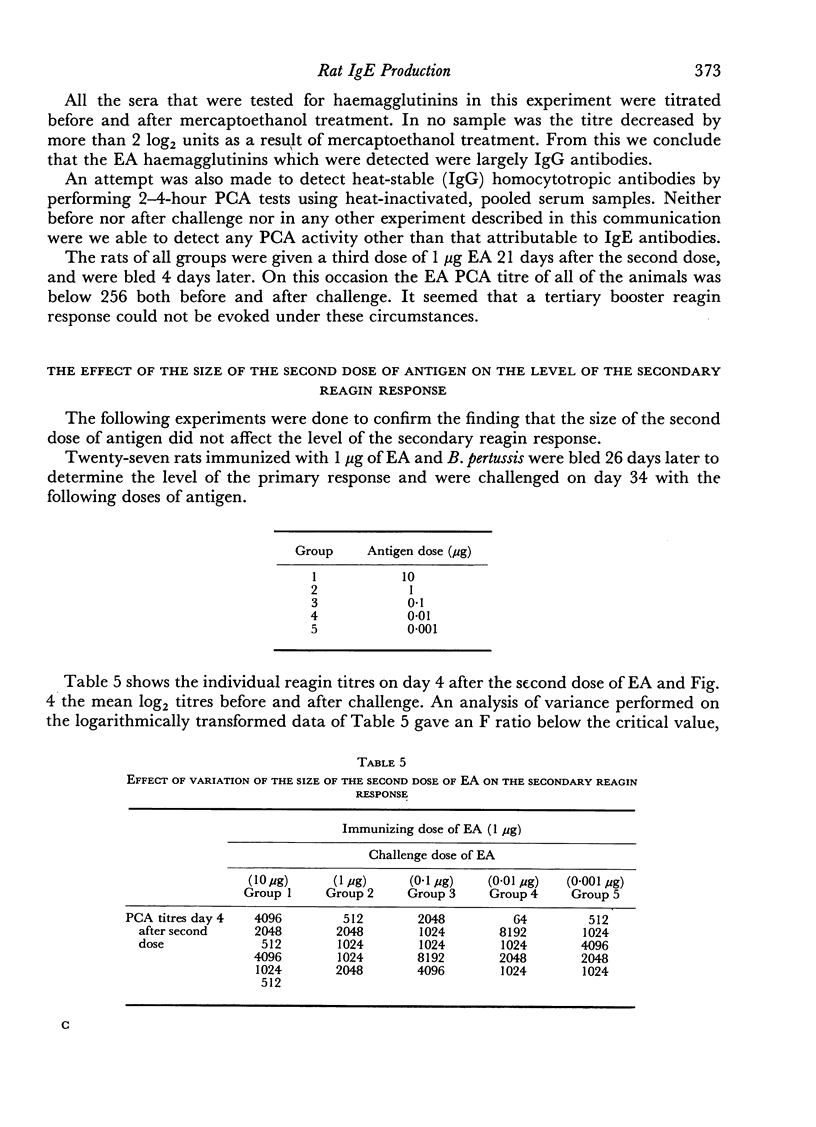
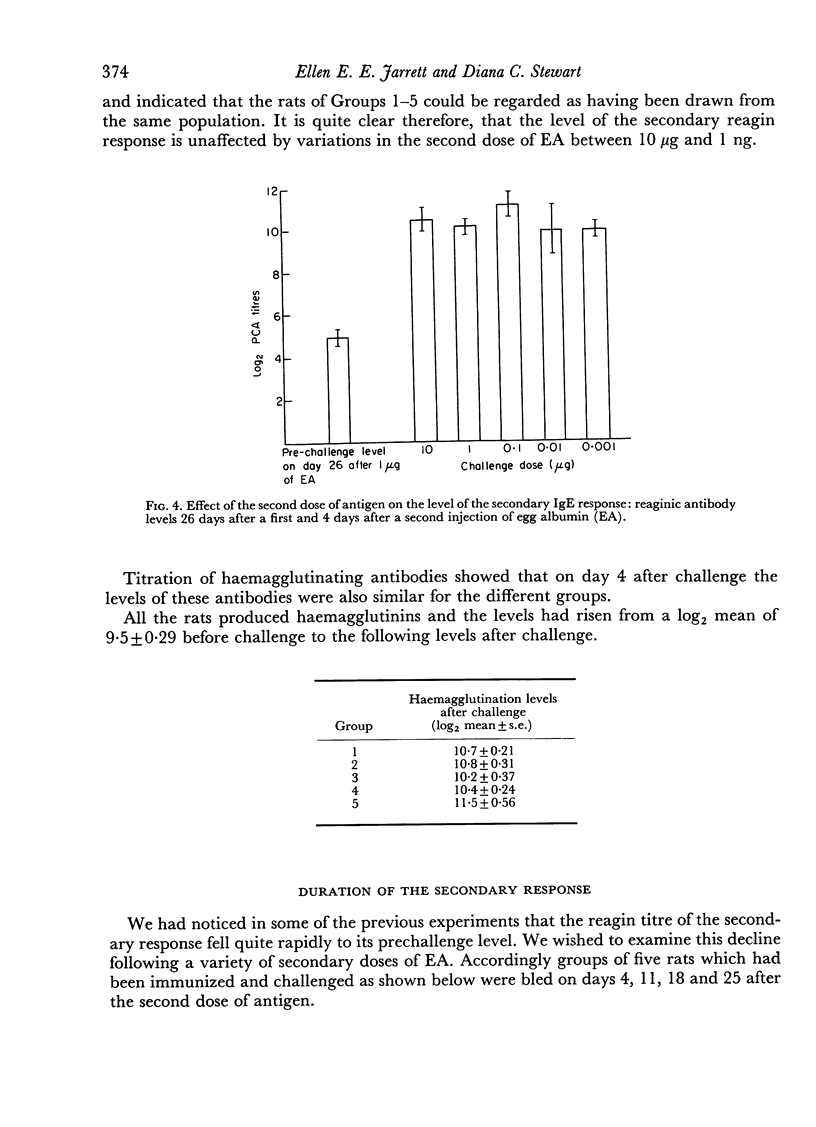
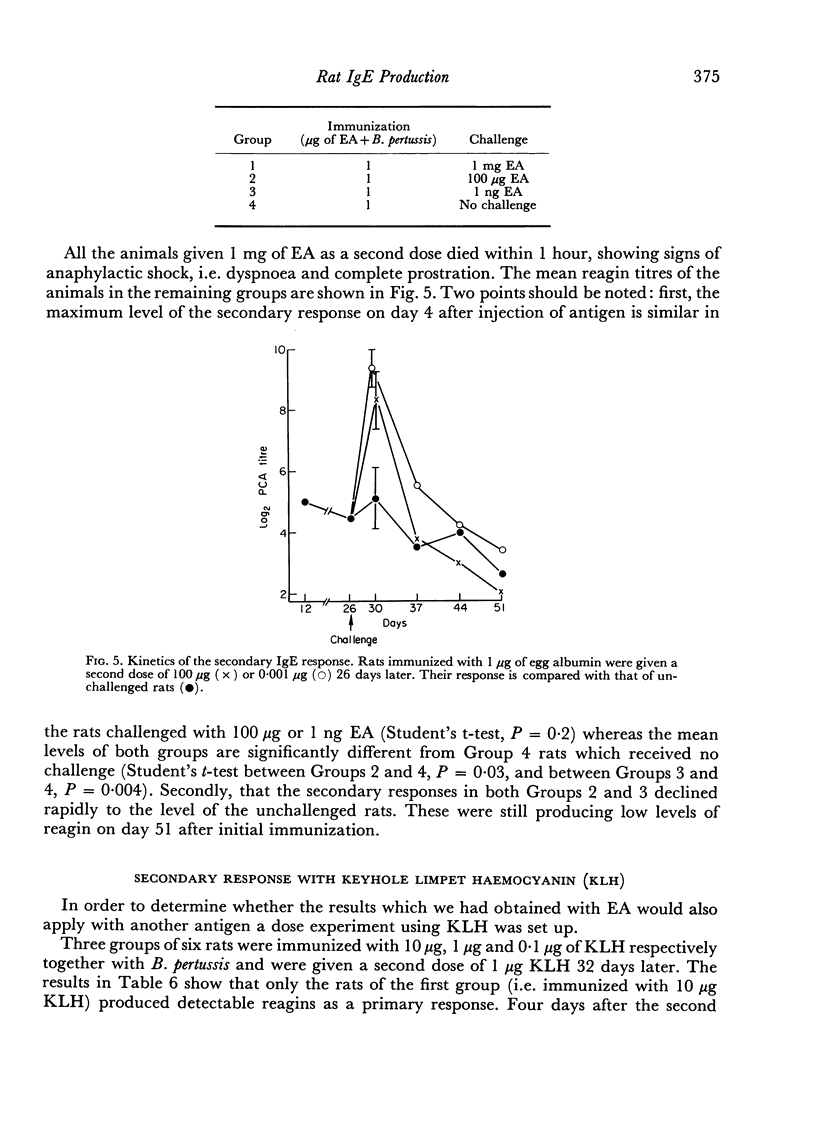
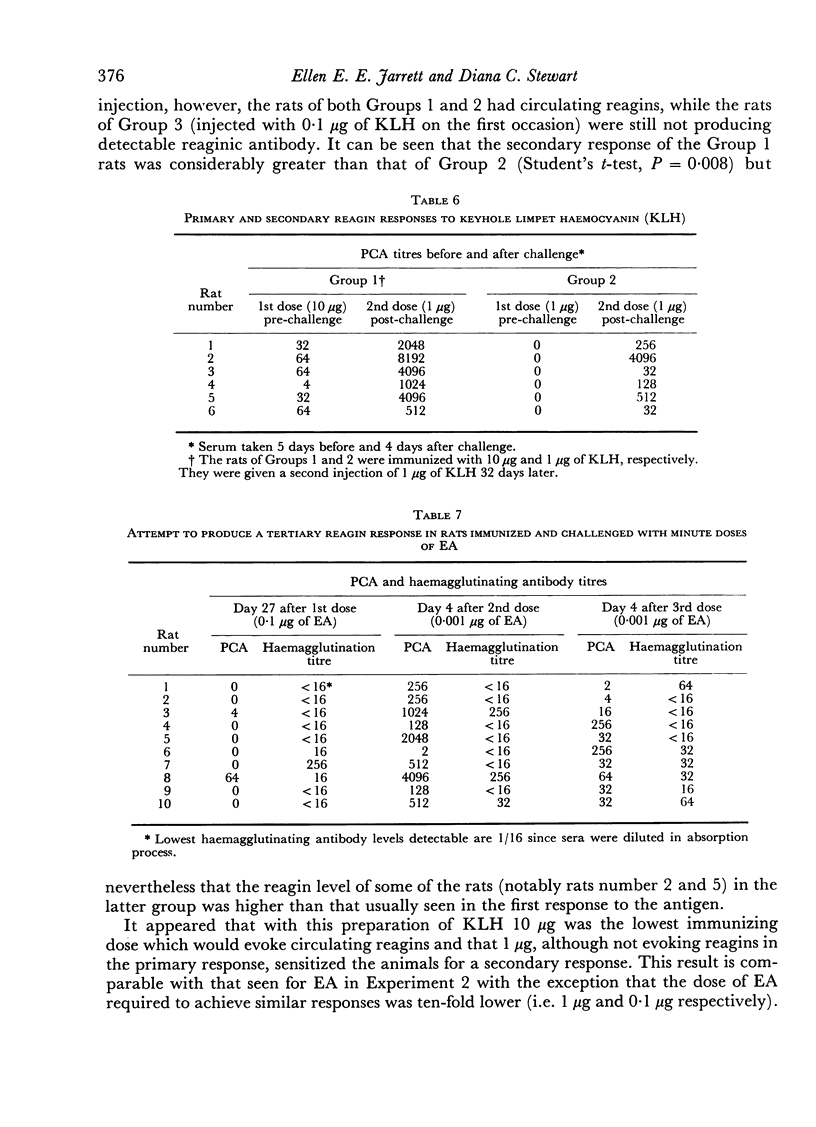
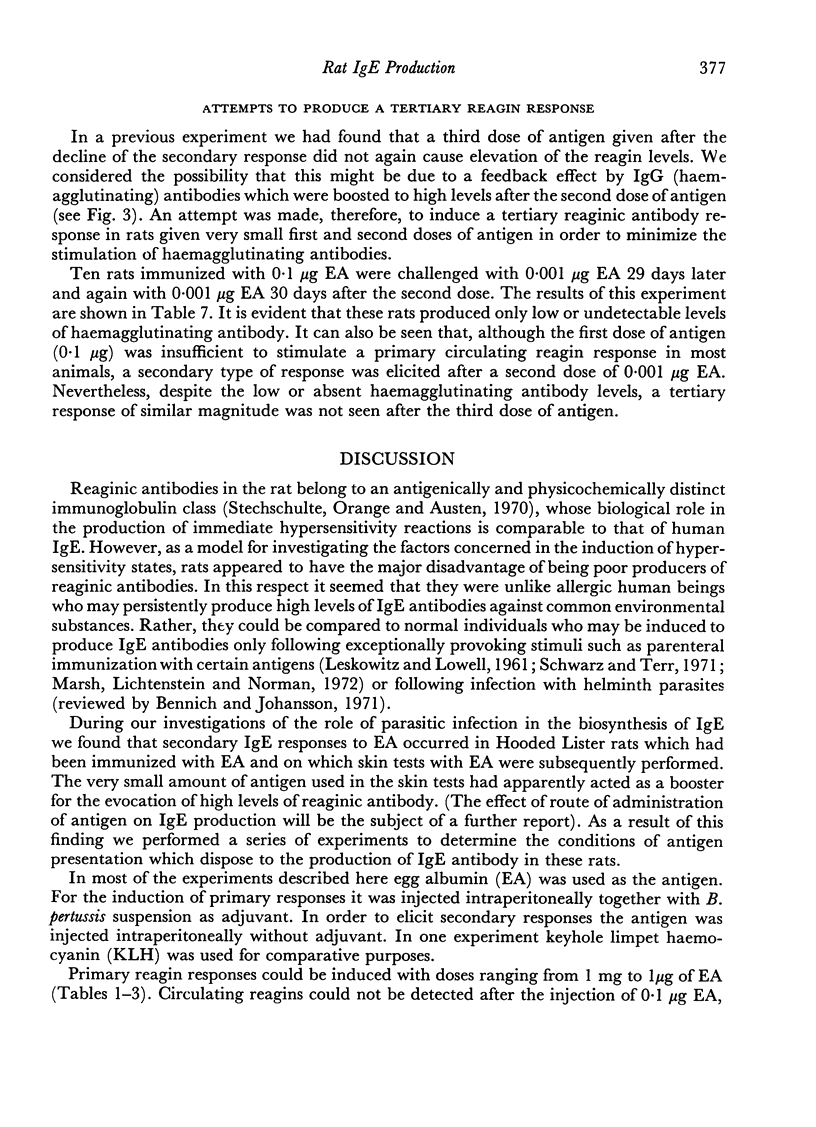
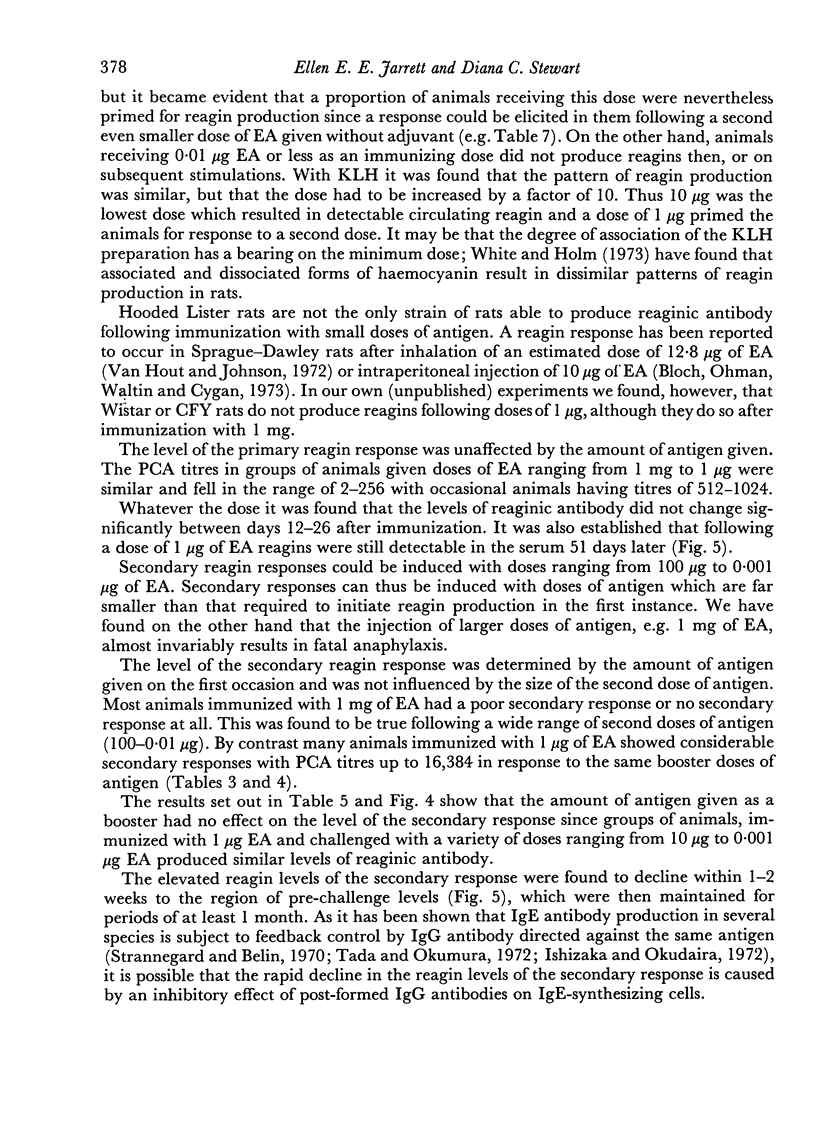
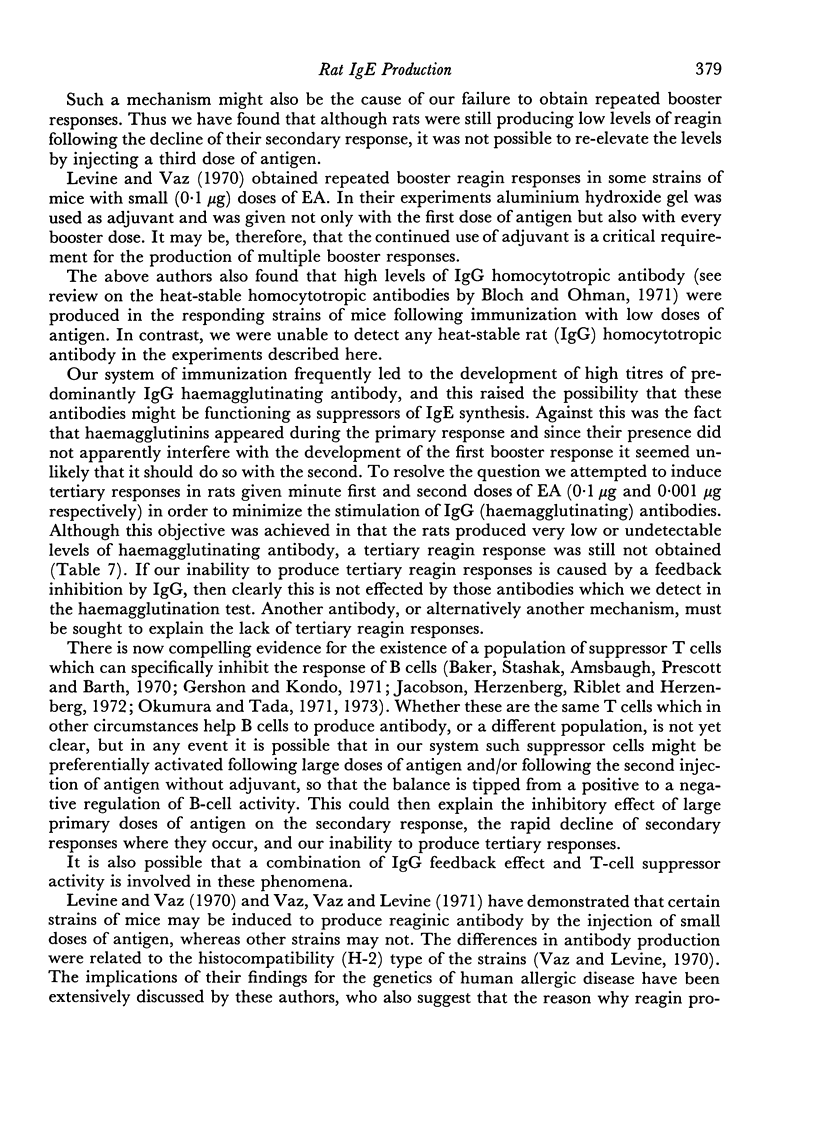
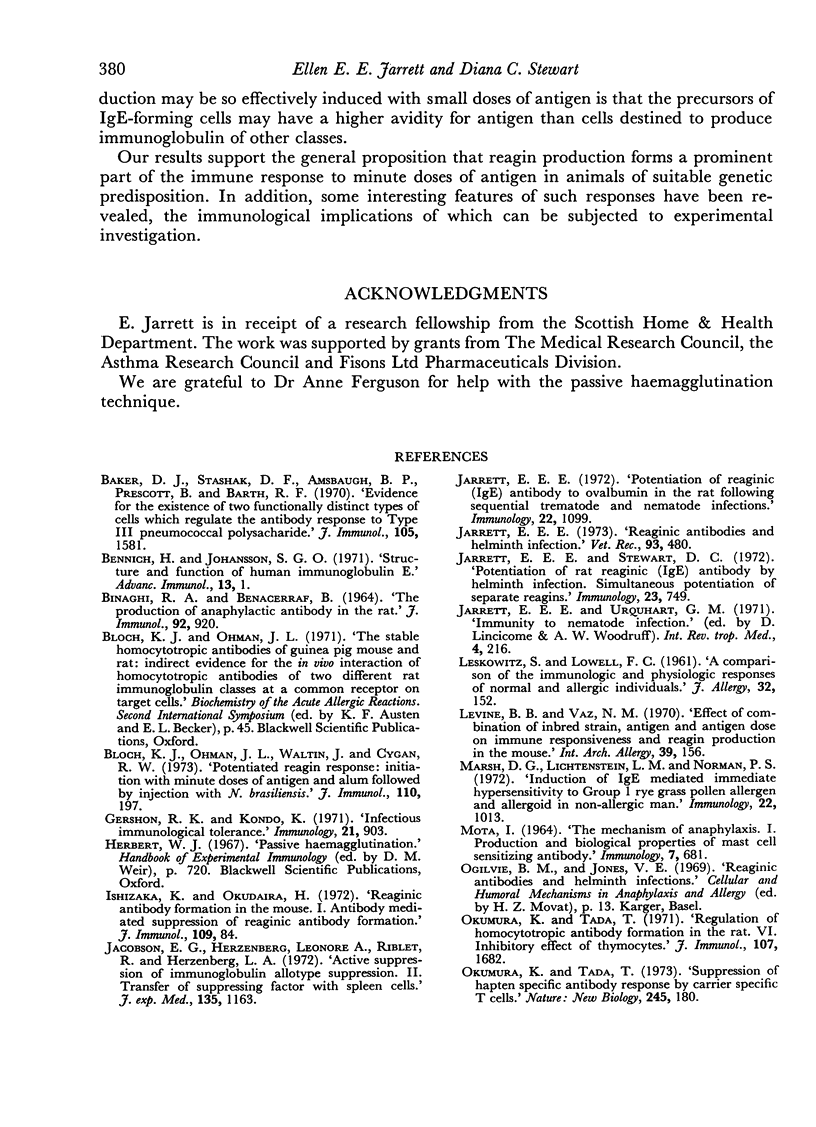

Selected References
These references are in PubMed. This may not be the complete list of references from this article.
- BINAGHI R. A., BENACERRAF B. THE PRODUCTION OF ANAPHYLACTIC ANTIBODY IN THE RAT. J Immunol. 1964 Jun;92:920–926. [PubMed] [Google Scholar]
- Baker P. J., Stashak P. W., Amsbaugh D. F., Prescott B., Barth R. F. Evidence for the existence of two functionally distinct types of cells which regulate the antibody response to type 3 pneumococcal polysaccharide. J Immunol. 1970 Dec;105(6):1581–1583. [PubMed] [Google Scholar]
- Bloch K. J., Ohman J. L., Jr, Waltin J., Cygan R. W. Potentiated reagin response: initiation with minute doses of antigen and alum followed by infection with Nippostrongylus brasiliensis. J Immunol. 1973 Jan;110(1):197–204. [PubMed] [Google Scholar]
- Gershon R. K., Kondo K. Infectious immunological tolerance. Immunology. 1971 Dec;21(6):903–914. [PMC free article] [PubMed] [Google Scholar]
- Ishizaka K., Okudaira H. Reaginic antibody formation in the mouse. I. Antibody-mediated suppression of reaginic antibody formation. J Immunol. 1972 Jul;109(1):84–89. [PubMed] [Google Scholar]
- Jacobson E. B., Herzenberg L. A., Riblet R., Herzenberg L. A. Active suppression of immunoglobulin allotype synthesis. II. Transfer of suppressing factor with spleen cells. J Exp Med. 1972 May 1;135(5):1163–1176. doi: 10.1084/jem.135.5.1163. [DOI] [PMC free article] [PubMed] [Google Scholar]
- Jarrett E. E. Potentiation of reaginic (IgE) antibody to ovalbumin in the rat following sequential trematode and nematode infections. Immunology. 1972 Jun;22(6):1099–1101. [PMC free article] [PubMed] [Google Scholar]
- Jarrett E. E. Reaginic antibodies and helminth infection. Vet Rec. 1973 Nov 3;93(18):480–483. doi: 10.1136/vr.93.18.480. [DOI] [PubMed] [Google Scholar]
- Jarrett E. E., Stewart D. C. Potentiation of rat reaginic (IgE) antibody by helminth infection. Simultaneous potentiation of separate reagins. Immunology. 1972 Nov;23(5):749–755. [PMC free article] [PubMed] [Google Scholar]
- LESKOWITZ S., LOWELL F. C. A comparison of the immunologic and physiologic responses of normal and allergic individuals. J Allergy. 1961 Mar-Apr;32:152–161. doi: 10.1016/0021-8707(61)90068-5. [DOI] [PubMed] [Google Scholar]
- Levine B. B., Vaz N. M. Effect of combinations of inbred strain, antigen, and antigen dose on immune responsiveness and reagin production in the mouse. A potential mouse model for immune aspects of human atopic allergy. Int Arch Allergy Appl Immunol. 1970;39(2-3):156–171. doi: 10.1159/000230343. [DOI] [PubMed] [Google Scholar]
- MOTA I. THE MECHANISM OF ANAPHYLAXIS. I. PRODUCTION AND BIOLOGICAL PROPERTIES OF 'MAST CELL SENSITIZING' ANTIBODY. Immunology. 1964 Nov;7:681–699. [PMC free article] [PubMed] [Google Scholar]
- Marsh D. G., Lichtenstein L. M., Norman P. S. Induction of IgE-mediated immediate hypersensitivity to group I rye grass pollen allergen and allergoids in non-allergic man. Immunology. 1972 Jun;22(6):1013–1028. [PMC free article] [PubMed] [Google Scholar]
- Okumura K., Tada T. Regulation of homocytotropic antibody formation in the rat. VI. Inhibitory effect of thymocytes on the homocytotropic antibody response. J Immunol. 1971 Dec;107(6):1682–1689. [PubMed] [Google Scholar]
- Okumura K., Tada T. Suppression of hapten-specific antibody response by carrier-specific T cells. Nat New Biol. 1973 Oct 10;245(145):180–182. doi: 10.1038/newbio245180a0. [DOI] [PubMed] [Google Scholar]
- Orr T. S., Blair A. M. Potentiated reagin response to egg albumin and conalbumin in Nippostrongylus brasiliensis infected rats. Life Sci. 1969 Oct 15;8(20):1073–1077. doi: 10.1016/0024-3205(69)90459-7. [DOI] [PubMed] [Google Scholar]
- Schwartz H. J., Terr A. I. The immune response of allergic and normal subjects to pneumococcal polysaccharide. Int Arch Allergy Appl Immunol. 1971;40(4-5):520–525. doi: 10.1159/000230435. [DOI] [PubMed] [Google Scholar]
- Strannegård O., Belin L. Suppression of reagin synthesis in rabbits by passively administered antibody. Immunology. 1970 May;18(5):775–785. [PMC free article] [PubMed] [Google Scholar]
- Van Hout C. A., Johnson H. G. Synthesis of rat IgE by aerosol immunization. J Immunol. 1972 Mar;108(3):834–836. [PubMed] [Google Scholar]
- Vaz E. M., Vaz N. M., Levine B. B. Persistent formation of reagins in mice injected with low doses of ovalbuminl. Immunology. 1971 Jul;21(1):11–15. [PMC free article] [PubMed] [Google Scholar]
- Vaz N. M., Levine B. B. Immune responses of inbred mice to repeated low doses of antigen: relationship to histocompatibility (H-2) type. Science. 1970 May 15;168(3933):852–854. doi: 10.1126/science.168.3933.852. [DOI] [PubMed] [Google Scholar]
- White G. J., Holm M. S. Induction of reagin synthesis in the rat with associated and dissociated hemocyanin: effect of antilymphocyte serum. J Immunol. 1973 Feb;110(2):327–334. [PubMed] [Google Scholar]


